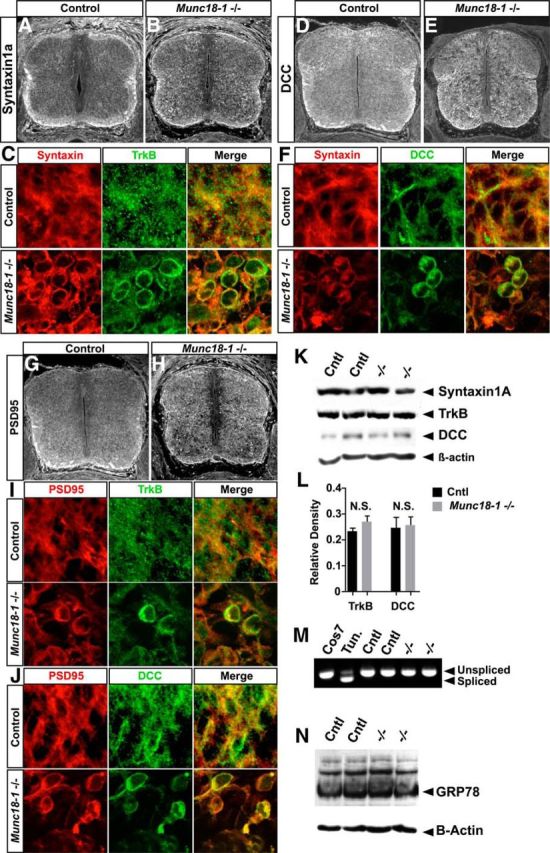Figure 7.

Protein mistrafficking in Munc18-1−/− mice. Syntaxin1a is expressed throughout the spinal cord, particularly in fiber tracts (A, B). In Munc18-1−/− spinal cords, accumulation of Syntaxin1a can be seen in the soma of neurons (B, C). TrkB and Syntaxin1a accumulate in the same neurons in Munc18-1−/− spinal cords (C). Similar to Syntaxin1a, DCC accumulates in Munc18-1−/− spinal neurons (D, E). DCC and Syntaxin can accumulate in the same neurons (F). The postsynaptic protein PSD-95 is expressed in the spinal cord and accumulates similarly to Syntaxin1a (G, H). Cells in which PSD-95 accumulates also display accumulation of TrkB (I) or DCC (J). Western blotting reveals that Syntaxin1a, DCC, and TrkB are found at the same molecular weight in control and Munc18-1−/− animals (K). In addition, expression levels of TrkB and DCC are unaffected in Munc18-1−/− spinal cords (L; TrkB, p = 0.212 n = 6; DCC, p = 0.855, n = 4). RT-PCR directed against XBP-1 reveals that tunicamycin treatment induces XBP-1 splicing in mouse embryonic fibroblasts, but that this splicing is not present in control or Munc18-1−/− spinal cords at E13.5 (M). Western blotting for GRP78 reveals no differences in expression levels between control and Munc18-1−/− animals at E13.5 (N).
